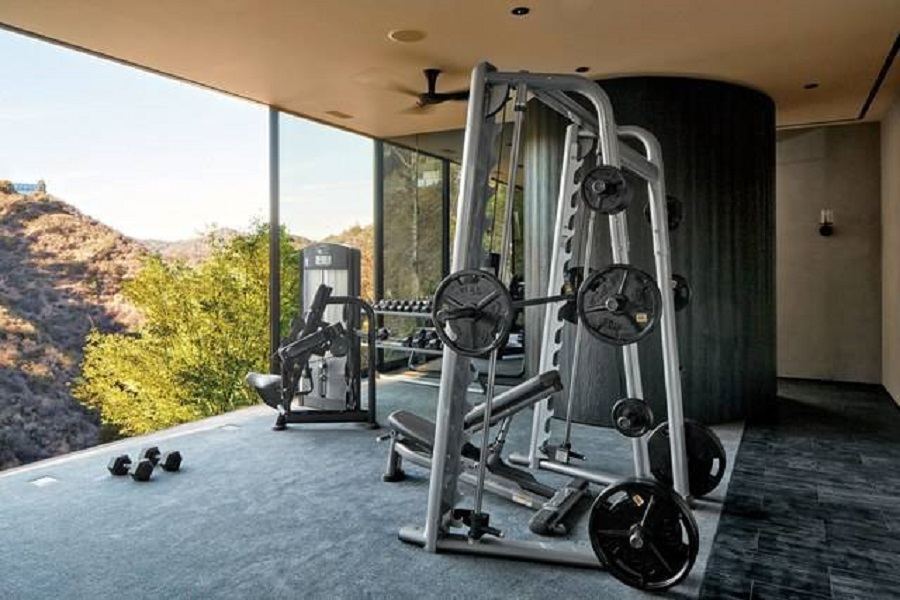Which muscles do push-ups work?
Push-ups are a common fitness exercise, which mainly exercise the muscles of the upper limbs, waist and abdomen, especially the chest muscles. Push-ups mainly exercise the pectoralis major and triceps, as well as the anterior deltoid, serratus anterior, coracobrachialis and other parts of the body. A study published by the American Association of Authoritative Sports pointed out that doing push-ups can test the exercise ability of almost all parts of the human body and can be used as a test standard for physical fitness.
The correct way to do push-ups:
- Support the body with both hands, the arms are perpendicular to the ground, the legs are stretched to the back of the body, rely on the toes of the hands and the toes of the two feet to maintain balance, keep the head, neck, back, buttocks and legs in a straight line. Straight and flat.
- Bend both elbows to the outside of the body, and lower the body to basically close to the floor. Squeeze your abs, keeping your body in a straight line, hold for a second, then return to normal. The focus of the action is to keep the body straight and level up and down. The difficulty is to bend the elbows straight.
How to do push-ups most effectively:
- Change in distance between hands
The hands are slightly wider (or slightly narrower) on the shoulders, and the elbows are open and parallel to the ground. As long as the hands and shoulders are not equal, the difficulty of the push-up will increase accordingly. The method that is slightly wider than the shoulder distance is more focused on exercising the strength of the arm and shoulder muscles; the method that is slightly narrower than the shoulder distance is more focused on exercising the chest muscles and back muscles.
- Changes in technique and footwork
The technique can be divided into three forms: full palm support, fist support and finger support. From the direction, it can be divided into three types of ground support postures: fingertips forward, inward and outward. Full palm support is to support the ground with the whole palm; fist support is to support the ground in the form of a clenched fist; finger support is to support the ground with the first joint of the fingers. Finger support requires a lot of strength and is the most difficult. The foot method can be divided into two forms: the two feet together and the open one. You can also use the instep or the arch of the foot to support the ground respectively.
- Changes in body tilt posture
For high-position push-ups, when doing exercises, the practitioner’s body is lower than the feet and the hands are higher, and the hands and feet are not on the same level. This pose is suitable for beginners and people with little strength. The mid-position push-up, where the practitioner’s feet and hands are on the same level, is suitable for the general exercise crowd. For low-position push-ups, when practicing, the practitioner’s body is high with feet and hands low, feet can be placed on a low stool, and hands are supported on the edge of the bed, and hands and feet are not on the same plane. This posture will put the weight of the whole body on the upper limbs, which requires higher physical fitness of the bodybuilder.
- Changes in exercise frequency
It can be combined with speed and slow. During the exercise, you can do it a few times faster and then do it slowly; you can also count regularly to calculate the number of exercises in a unit time; you can also simply count, and the practitioner does push-ups without interruption until exhaustion. Variation in frequency stimulates muscle growth better, and cross-training them makes you less prone to fatigue during workouts. Practice push-ups in a step-by-step manner, from easy to difficult; fully massage, shake, and stretch the upper limbs before doing them to prevent muscle stiffness; during the practice, you should explore the push-up form that suits you, and control the exercise load reasonably. How should I do push-ups? Beginners can do two sets of 5 to 10 reps each; those with a certain foundation of exercise can do 3 sets of 10 reps each; advanced people can try 4 sets of 15 to 20 push-ups.
Reminder: For more knowledge about upper abs workout,lower ab exercises, pectoral muscles, build muscle, please pay attention to: gtehy.com, to provide you with professional, comprehensive and professional ab workouts for men,ab workouts for women,dumbbell ab workouts,best ab workouts and other knowledge.


